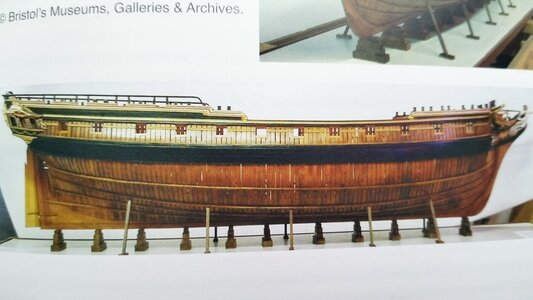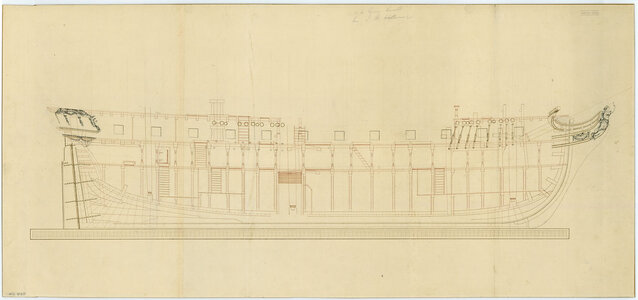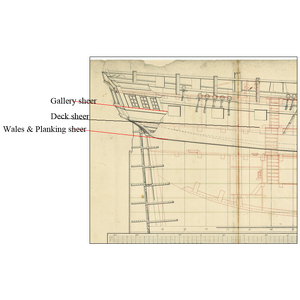Hello friends,
I have a general design question regarding the windows, railings, and wooden trim on the side galleries. Below is an exceptionally well made model of Nuestra Senora del Pilar de Zaragoza by marktiedens on the MSW forum.
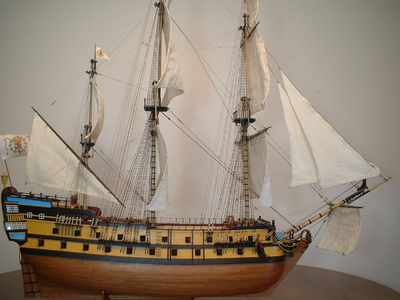
The angle of the features on the gallery appear to be oritented in a horizontal alignment...
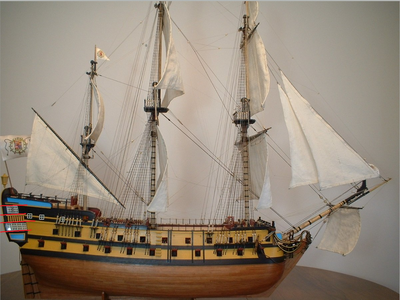
...and are not aligned withthe sheer of the hull, parallel to the wales.
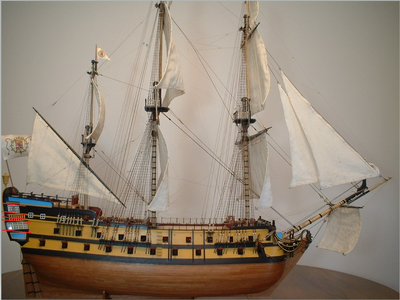
Is this the correct orientation? I understand that the internal decks may follow a more horizontal angle, and not the sheer line, and that will affect windows and other features of the side galleries. Models often seem to have this appearance, but many historic drawings appear to have the gallery features follow the sheer lines. Is this something unique to each vessel? Show kit builders modify the galleries to follow the sheer line in order to present a more accurate design? What is the general rule of thumb regarding this feature?
I have a general design question regarding the windows, railings, and wooden trim on the side galleries. Below is an exceptionally well made model of Nuestra Senora del Pilar de Zaragoza by marktiedens on the MSW forum.

The angle of the features on the gallery appear to be oritented in a horizontal alignment...

...and are not aligned withthe sheer of the hull, parallel to the wales.

Is this the correct orientation? I understand that the internal decks may follow a more horizontal angle, and not the sheer line, and that will affect windows and other features of the side galleries. Models often seem to have this appearance, but many historic drawings appear to have the gallery features follow the sheer lines. Is this something unique to each vessel? Show kit builders modify the galleries to follow the sheer line in order to present a more accurate design? What is the general rule of thumb regarding this feature?



